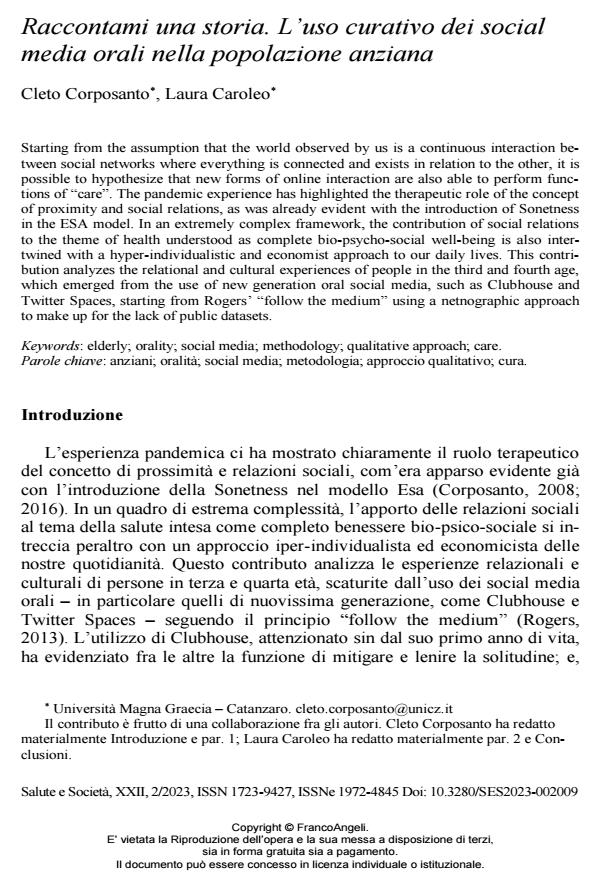Raccontami una storia. L’uso curativo dei social media orali nella popolazione anziana
Titolo Rivista SALUTE E SOCIETÀ
Autori/Curatori Cleto Corposanto, Laura Caroleo
Anno di pubblicazione 2023 Fascicolo 2023/2
Lingua Italiano Numero pagine 14 P. 92-105 Dimensione file 376 KB
DOI 10.3280/SES2023-002009
Il DOI è il codice a barre della proprietà intellettuale: per saperne di più
clicca qui
Qui sotto puoi vedere in anteprima la prima pagina di questo articolo.
Se questo articolo ti interessa, lo puoi acquistare (e scaricare in formato pdf) seguendo le facili indicazioni per acquistare il download credit. Acquista Download Credits per scaricare questo Articolo in formato PDF

FrancoAngeli è membro della Publishers International Linking Association, Inc (PILA)associazione indipendente e non profit per facilitare (attraverso i servizi tecnologici implementati da CrossRef.org) l’accesso degli studiosi ai contenuti digitali nelle pubblicazioni professionali e scientifiche
Starting from the assumption that the world observed by us is a continuous interaction be- tween social networks where everything is connected and exists in relation to the other, it is possible to hypothesize that new forms of online interaction are also able to perform func- tions of "care". The pandemic experience has highlighted the therapeutic role of the concept of proximity and social relations, as was already evident with the introduction of Sonetness in the ESA model. In an extremely complex framework, the contribution of social relations to the theme of health understood as complete bio-psycho-social well-being is also inter- twined with a hyper-individualistic and economist approach to our daily lives. This contri- bution analyzes the relational and cultural experiences of people in the third and fourth age, which emerged from the use of new generation oral social media, such as Clubhouse and Twitter Spaces, starting from Rogers’ "follow the medium" using a netnographic approach to make up for the lack of public datasets.
Parole chiave:anziani; oralità; social media; metodologia; approccio qualitativo; cura.
Cleto Corposanto, Laura Caroleo, Raccontami una storia. L’uso curativo dei social media orali nella popolazione anziana in "SALUTE E SOCIETÀ" 2/2023, pp 92-105, DOI: 10.3280/SES2023-002009